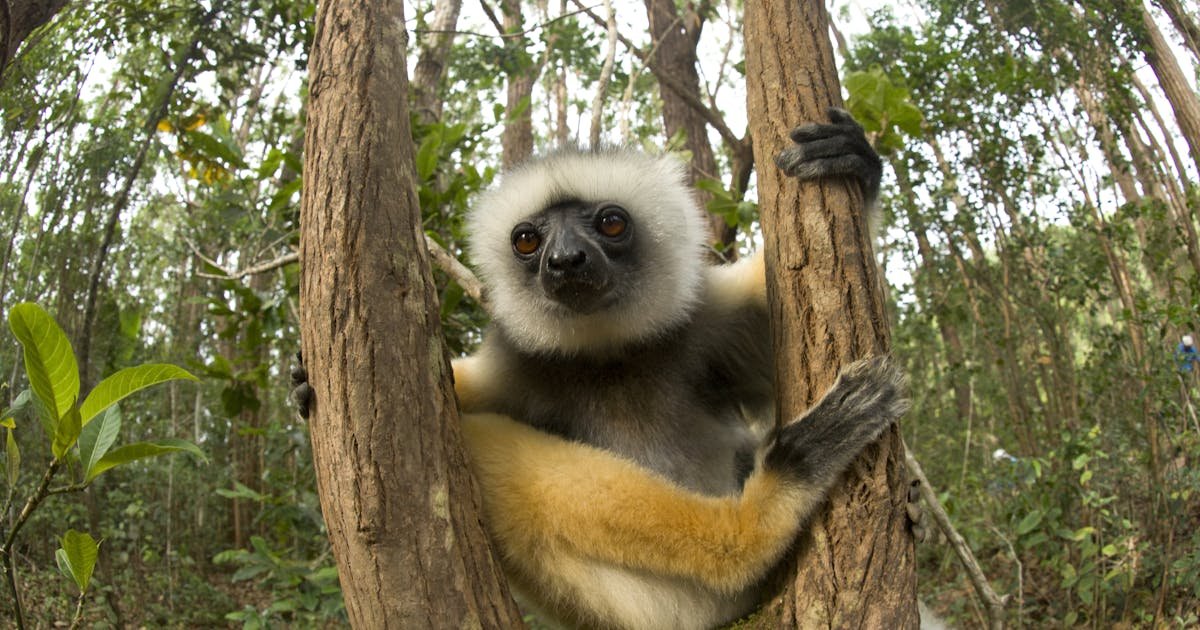This post was updated on October 2, 2019.
Lemurs are making themselves at home in Madagascar’s cacao and vanilla plantations, a new study finds.
New research funded by Conservation International (CI) indicates that carefully planned and well-managed shade-grown cacao and vanilla farms could serve as viable habitats for lemurs and other wildlife — a glimmer of hope for a country where 70 percent of the population lives in poverty, 90 percent of original vegetation has been lost and one iconic lemur species’ population has plummeted 95 percent since 2000.
A team from the Bristol Zoological Society (BZS) and the University of the West of England along with Malagasy colleagues found five species — three endangered — moving, resting and grooming among the branches of cacao and their shade trees on 61 farms in the Ambanja region of northwest Madagascar. BZS and Malagasy researchers also made the first documented observations of lemurs living in vanilla plantations and found five species on farms grown close to areas of natural forest and amid natural vegetation.
 
“There is a lot of evidence of the value of shade-grown coffee for bird conservation, but this is the first study we have that shows the role that cacao and vanilla farms can play as habitat for lemur species,” said Curan Bonham, an investment officer for Conservation International Ventures. “This research underscores the importance of and need for greater investment to promote sustainable production systems as part of a holistic landscape conservation strategy.”
Through discussions with farmers, the study found little evidence of negative interactions between the animals and local people. In fact, the lemurs may actually help out the farmers by eating insects seen as pests on the farms and also by dispersing
seeds from shade trees. Most important: None of the lemurs was observed feeding on cacao pods or beans.
“This co-existence is encouraging,” said Amanda Webber, a co-author of the study from BZS — but further research was needed, she explained, to determine whether cacao plantations serve as core habitat for the lemurs, or if the animals
are using them merely as highways to nearby forested areas.
The scientists set up camera traps, carried out nighttime surveys, followed the lemurs on foot and used special equipment to identify their calls. The five species of lemurs (Northern giant mouse lemur, Sambirano mouse lemur, Sambirano fork-marked
lemur, dwarf lemurs and Gray’s sportive lemur) were also discovered among albizia, mango, marula and banana trees on farms that work with and supply Madécasse,
a direct-trade chocolate and vanilla company.
As global demand for chocolate and vanilla grows, the potential to improve agroforestry for the benefit of wildlife and forests is substantial, according to Tim McCollum, founder and CEO of Madécasse. For example, more benefits could be generated
for endangered wildlife and ecosystems by intercropping the right fruit and native trees, reducing loss of native forest and tracking progress, through a combination of local knowledge and ecological perspective.
“Poverty is the root cause of habitat destruction in Madagascar,” McCollum said. “Any serious conservation needs to solve poverty at the village level. This research is the first step in linking lemur conservation and renewable income
generation for cacao and vanilla farmers.”
Cassandra Kane is the communications manager for CI’s Conservation Finance Division.
Want to read more stories like this? Sign up for email updates. Donate to Conservation International.





